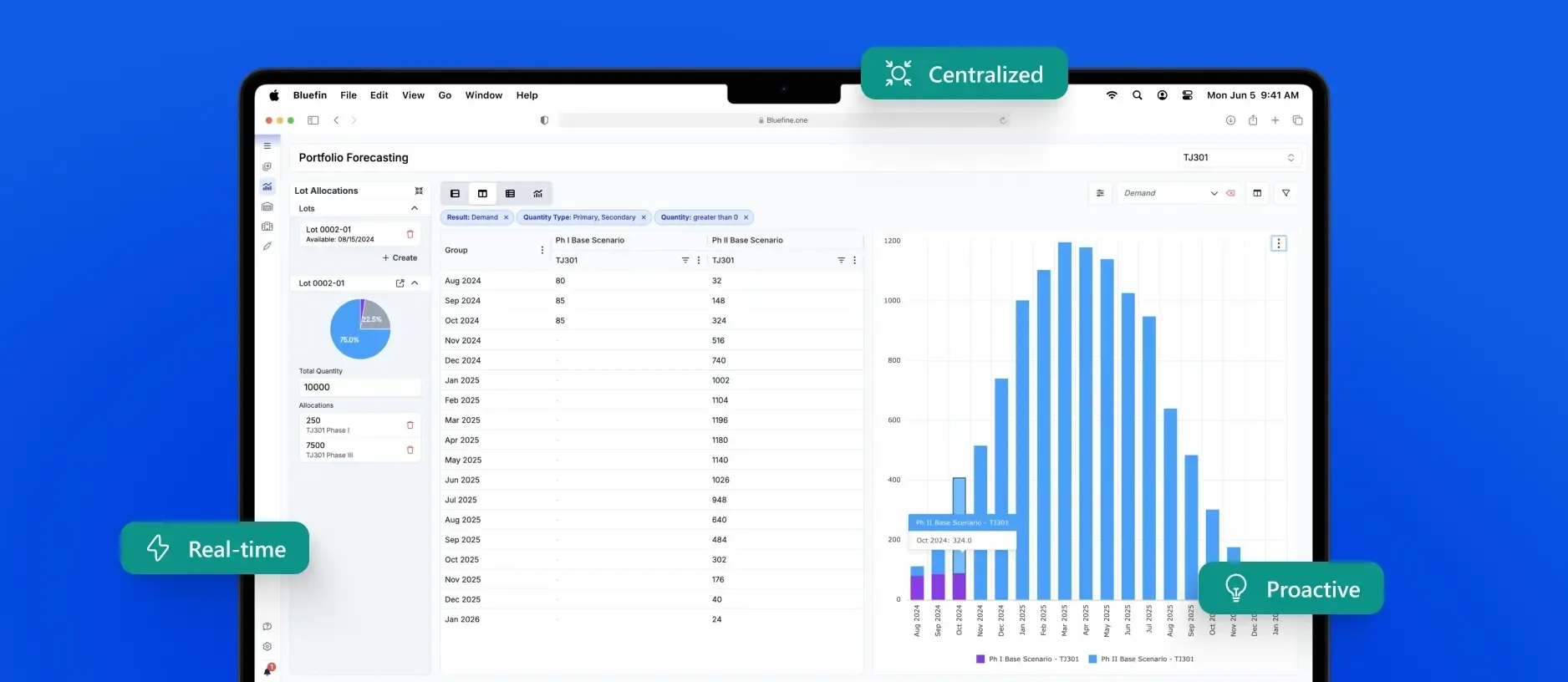Beyond Demand Forecasting in Clinical Supplies
Today's software has moved beyond just demand forecasts, providing intelligence and visibility into the clinical supply chain.
By Andy Maltun
Forecasting software is nothing new to clinical supply organizations. At many large companies, home-grown proprietary software replaced spreadsheets long ago. Various commercial systems have been on the market for years - decades, even - to help calculate demand forecasts.
At Bluefin, our team aims to deliver more than a spreadsheet replacement. Calculating demand forecasts is just one aspect of what clinical supply teams do. In the end, the job description is to successfully supply a group of trials with enough drug product. It’s about being proactive, detail-oriented, and seeing risk coming far off on the horizon.
This is a complex, analytical, dynamic role that means not only coming up with an initial calculation of demand, but also making sure enough is produced, packed, labeled, and earmarked for the correct countries and adapting to changing circumstances. It’s a dynamic challenge, with enrollment rates that fluctuate and various unforeseen situations that constantly arise.
According to Sheila Goettner, an IRT veteran, “systems are getting more complex and harder to understand. Supply teams need easy access to the whole picture and be able to make fast, educated decisions.”
Bluefin Forecasting is designed to solve this challenging and important problem. It is built with several principles in mind:
- Centralized
- Real-Time
- Proactive
Let’s go into a little more detail on each of these.
Centralized
Clinical supply teams manage stacks of important information, and it’s often fragmented — spread out across multiple systems, behind multiple logins, or on different peoples’ hard drives. This results in many problems.
It creates key person risk, so if someone is out of the office, it’s hard to keep the supply chain moving. It’s tedious, because getting information often means logging in to multiple systems over and over.
But above all, it’s impossible for anyone to see the whole picture at once. And without having the full picture, things are bound to fall through the cracks. A demand forecast that is separate from enrollment data, which is separate from inventory and expiry information, is bound to result in mistakes.
Bluefin brings planning together with actuals in one system, so that there are no cracks for things to fall through. Your demand plans, enrollment data and lot data, all in one place.
Real-Time
A demand forecast is great, but what do you do once your study starts? Actual enrollment never exactly matches forecasts - and it’s usually slower, not faster, than expected. This means some risk of expiry. But a concrete assessment of this risk is what’s needed.
Bluefin allows you to update your enrollment and demand forecasts with actual enrollment data as the study unfolds, so that you can easily keep your forecast up-to-date and accurate.
Proactive
So, you’ve done it. All your critical clinical supply data - demand forecast, lot allocations, expiries - is in one platform. It’s all updated with the latest enrollment data from the field. What’s next?
Bluefin continuously analyzes this information and alerts you to any potential gaps in supply. Whether because of insufficient quantity manufactured, or drug product expiring because of slower-than-forecasted enrollment, Bluefin brings the issue to your attention. By pushing alerts, Bluefin eases the burden and cognitive overhead of constantly cycling through data to look for problems.
The next generation of clinical supply forecasting is here and ready to help your team run successful and stress-free trials. Contact us or schedule a call to discuss how Bluefin can help with your studies.